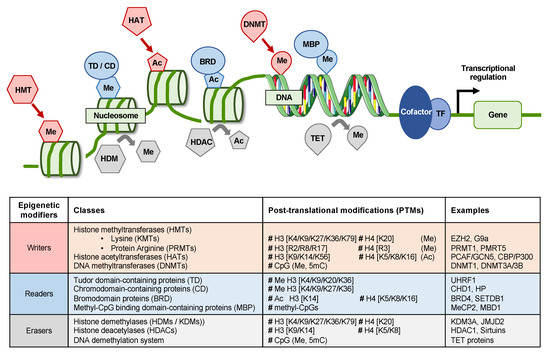

Dysregulation of these epigenetic signatures can provide tell-tale signs for diseased state. Their PTMs, considered as “epigenetic signatures”, have shown significant association with various molecular functions like transcription, DNA damage/repair, etc. Several variations existing within the five major histones. In addition to the above-mentioned DNA modifications, histone post translational modifications (PTMs) play an important role in maintaining the structural as well as functional integrity of the chromatin. Moreover, the present issue cover many new avenues where epigenetic modifications can be associated like migraine pain and possible remediation strategies that may be adopted in future to counter such ailments. In both the articles, issues relating to genomic imprinting have been discussed along with how understanding epigenetic alterations can help in countering these disorders in humans, clinically. outlines some of the major aspects of DNA methylation and how it affects gene expression and development of neuronal disorder like autism. A fine balance maintains the normal profile of the cell and an imbalance can be associated with development of diseased states including cancer, neuronal disorder, impaired DNA repair, exposure associated disorders. Several attributes to this covalent modification landscape include regulation of transcription, accessibility of the DNA template, DNA repair signaling, etc. Historically, methylation of the cytosine is heavily researched in the field of epigenetics. The amino acids of the histones as well as the nucleotides within the DNA can be covalently modified raising the chance to alter the gene expression activity within the cells. Except for H1, all the other types are found within the nucleosomal core. There are five types of histones (H1, H2A, H2B, H3 and H4). The two main components of the chromosome are the DNA and the histones. It has several layers of architectural niches that cause the DNA to super coil and compact the genomic material into the nucleus. In the present thematic issue of ‘ The Nucleus’ entitled “Epigenetics and Chromatin Dynamics: Role in health and disease” we tried to compile some of the interesting aspects of epigenetic network and their relevance to health, outcome of diseases as well as potential foci for epi-therapeutic intervention.Īs discussed in this issue, the chromatin organization is not simple. Aberrations in the epigenetic network can spatially induct definitive changes and establish as well as dictate the outcome of several diseases. They are time dependent as well as on the trajectory of an individual’s lifestyle where diet, substance abuse to addictions and environmental exposures like occupational hazards. These alterations can start as early in the embryonic development and well into adult livelihood. Epigenetic alterations include various type of modifications like methylation, acetylation, phosphorylation of the nucleic and amino acids, as well as crosstalk between molecules to regulate downstream activities like replication, DNA damage/repair responses, etc. In the simplest version, a conglomerated co-operation between these three, lead to the phenotypic fate of a cell, but epigenetic regulation in turn generates degree complexity in organisms.


The Central Dogma prevails the basic functioning of all living organisms, whereby the regulation of cell cycle integrates the molecular link between the DNA, RNA and proteins.


 0 kommentar(er)
0 kommentar(er)
